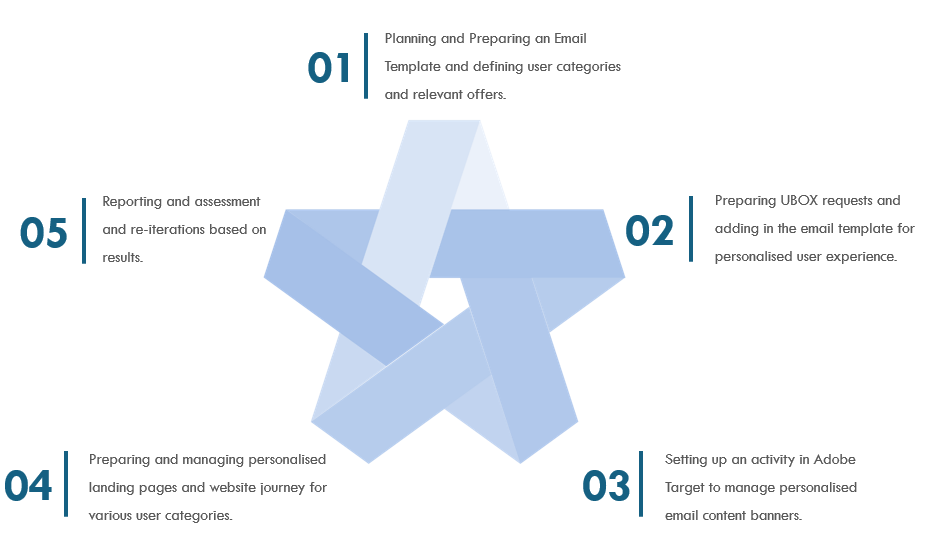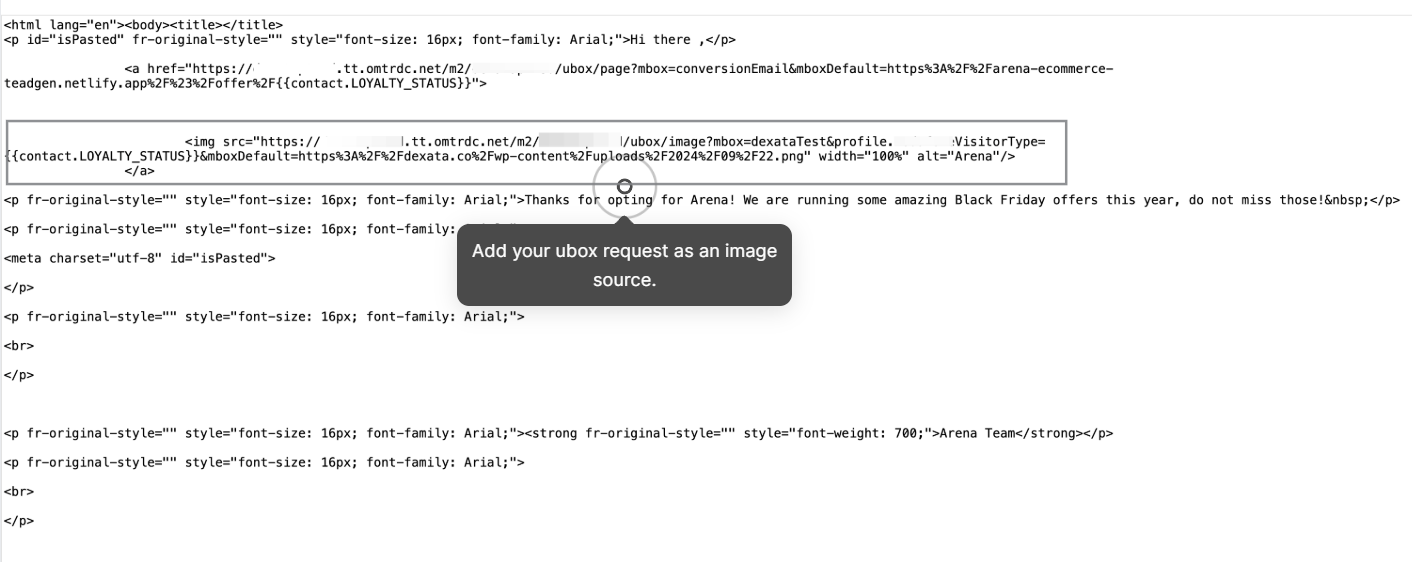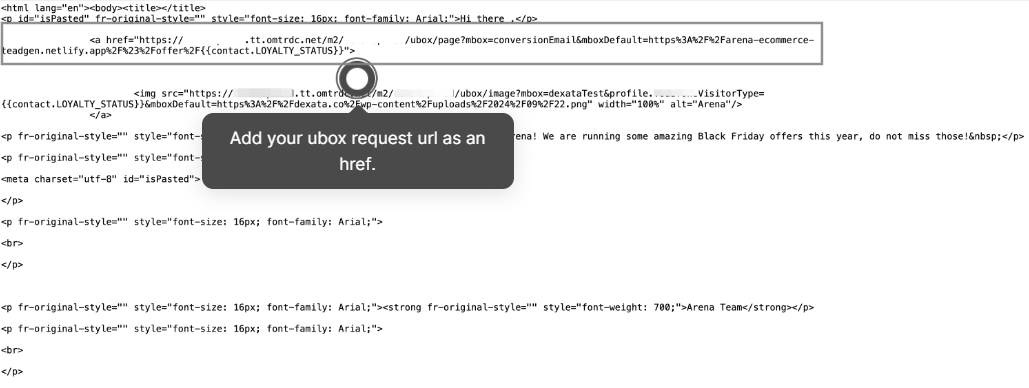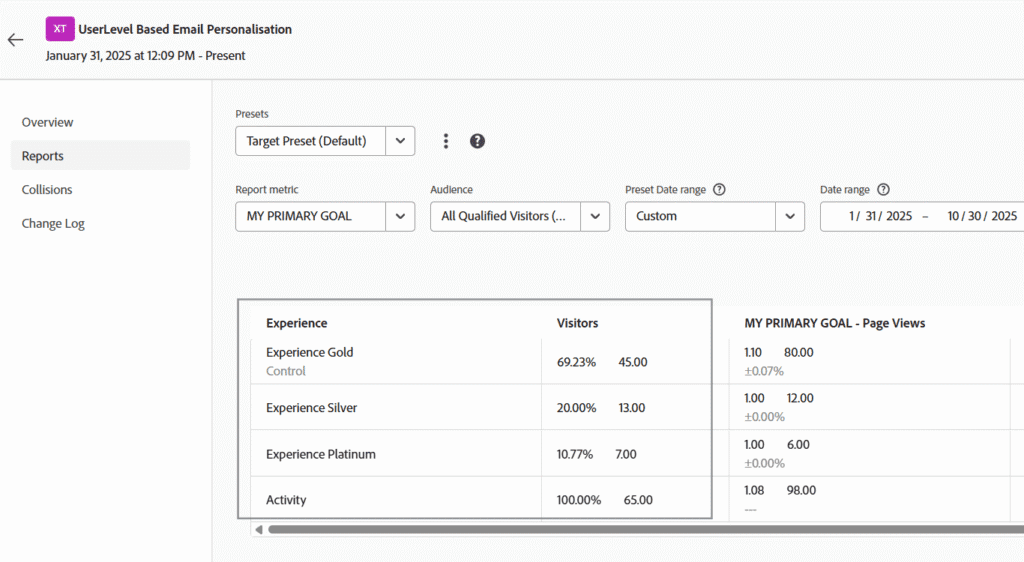Enhancing Email Personalisation with Adobe Target: Driving Engagement and Conversions

In a crowded inbox, the difference between an email that’s ignored and one that drives action often comes down to personalisation. Today’s consumers expect brands to understand their preferences, anticipate their needs, and deliver relevant content directly to their inbox. Email personalisation goes beyond simply inserting a recipient’s name, it’s about tailoring the entire experience so that every image, offer, and message resonates with the individual.
While many businesses widely recognise Adobe Target for delivering tailored experiences across websites and mobile apps, its capabilities extend to email personalisation as well. Businesses can leverage Adobe Target to dynamically customise email content, ensuring that recipients receive the most relevant messaging based on their attributes and behaviour.
Email marketing plays a crucial role in customer engagement strategies, but it comes with unique challenges—especially when it comes to personalisation. Unlike websites, where JavaScript can dynamically modify content, email clients impose strict security measures that prevent JavaScript execution. This limitation can make implementing personalised content more challenging. However, Adobe Target provides a powerful solution through UBOX requests, allowing brands to serve dynamic content in emails while overcoming JavaScript restrictions.
By using Adobe Target’s image-based personalisation approach, businesses can conduct A/B tests, segment audiences based on predefined attributes, and track user engagement—all within email campaigns. This blog explores how Adobe Target facilitates email personalisation, covering A/B testing, experience targeting, and performance tracking.
Note: This article is useful for you if you are planning to configure personalised experiences for your email campaigns and if you are unable to use Javascripts in email.
Why JavaScript is Not Allowed in Emails?
Most email clients, including Gmail, Outlook, and Apple Mail, block JavaScript execution due to security and privacy concerns. If JavaScript were enabled, emails could run harmful scripts, track users without consent, and dynamically manipulate content, violating privacy policies. Due to these restrictions, traditional Adobe Target client-side implementations (such as at.js) cannot be used for personalising email content.
Instead, businesses need to rely on image-based personalisation techniques that involve dynamically generated content, which Adobe Target enables through UBOX requests.
For reference : Limitations of HTML Email
Personalised Experience Targeting for Emails in Adobe Target
Experience Targeting (XT) enables brands to deliver highly personalised email content based on known customer attributes such as membership status, location, or purchase history. In email campaigns, we can pass profile attributes through a UBOX request, enabling Adobe Target to determine which experience is most relevant for each recipient.
This approach goes beyond basic A/B testing by ensuring each customer sees an individually tailored message that matches their profile, increasing engagement and conversion potential.
Business Scenario
An Ecommerce company wants to send promotional emails tailored to its customers’ membership tiers:
Gold Members – Receive an exclusive, high-value offer.
Silver Members – Get a mid-tier discount.
Platinum Members – See a standard discount.
Adobe Target uses profile attributes to identify the customer’s tier at the time of the request and dynamically serves the corresponding banner image in the email.
Configurations Phases
For configuring an email personalisation usecase, we would require multiple configuration phases as mentioned below:
Image Personalisation in Email (via UBOX redirection)
When we talk about email personalisation, the first and most impactful step is personalising the image inside the email itself. Unlike websites, emails have restrictions where JavaScript cannot be executed. That’s why Adobe Target provides a mechanism using UBOX requests to dynamically serve different images in the same email slot.
How it works: Instead of embedding a static image URL in the email, you instead embed a UBOX request URL. Then, Adobe Target decides, based on audience rules (e.g., Gold, Silver, Platinum customers), exactly which personalised image to display.
Why it’s important:
This approach allows marketers to display dynamic, personalised images directly within the inbox, thereby eliminating the need to create separate visuals or creatives for each customer segment.The
mboxDefaultparameter in the UBOX request controls which default image loads if no targeting conditions match. Adobe Target overrides this with the appropriate personalised image when rules are met.Display a dynamic, personalised image inside the email for different user types (Gold, Silver, Platinum) using Adobe Target.
Configurations Required:
Prepare UBOX Request URL
Each image variation is served through a UBOX request.
The request URL includes:
mbox→ the mbox name you configure in Targetprofile.VisitorType→ the attribute used to differentiate experiencesmboxDefault→ the fallback image URL if no targeting condition is matched
Example Requests:
Gold Experience: https://[YOURCLIENTCODE].tt.omtrdc.net/m2/[YOURCLIENTCODE]/ubox/image?mbox=[MBOXNAME]&profile.VisitorType=gold&mboxDefault=[DefaultURL]
Silver Experience: https://[YOURCLIENTCODE].tt.omtrdc.net/m2/[YOURCLIENTCODE]/ubox/image?mbox=[MBOXNAME]&profile.VisitorType=silver&mboxDefault=[DefaultURL]
Platinum Experience: https://[YOURCLIENTCODE].tt.omtrdc.net/m2/[YOURCLIENTCODE]/ubox/image?mbox=[MBOXNAME]&profile.VisitorType=platinum&mboxDefault=[DefaultURL]

Configure Adobe Target XT Activity
Navigate to Adobe Target → Activities → Create Activity → Experience Targeting (XT)
Choose Form-Based Experience Composer
Create Audiences based on
profile.VisitorType(Gold, Silver, Platinum)Create Experiences:
Each audience gets its own experience
Offer Type: Redirect Offer → Redirect to the respective image URL.
Activate the activity
Outcome: The correct image for each user type is displayed dynamically in the email inbox as given below : 
Landing Page Personalisation
After image personalisation in the email, the next step is making sure that when the user clicks the banner, they land on a personalised page.
This can be done in mutiple ways:
Approach
Control in Target
Maintenance Effort
Best For
A.1. Using UBOX Request for a single Landing Page
High (all personalisation inside Target)
Low (one page to maintain)
Personalised banners/offers with same layout
A.2. Using UBOX Requests for multiple Landing Pages
Medium (Target decides final page)
Medium (several pages maintained)
Different layouts per user category.
B.1. Using direct URL for a Single page with parameters.
High (Target uses params for personalisation)
Low (one page)
Offers with same structure but different content
B.2. Using direct URLs for multiple pages.
Low (no Target personalisation needed)
High (maintain multiple pages)
Entirely distinct pages per user category
A. Using UBOX Requests for Landing Pages
1. Forward to a single page → All traffic is sent to one landing page using the ubox request, and Adobe Target decides the experience based on the query parameters.
Example URLs:
Gold Experience: https://[YOURCLIENTCODE].tt.omtrdc.net/m2/[YOURCLIENTCODE]/ubox/page?mbox=[MBOXNAME]&mboxDefault=[Page URL along with Query Parameter Gold]
Silver Experience: https://[YOURCLIENTCODE].tt.omtrdc.net/m2/[YOURCLIENTCODE]/ubox/page?mbox=[MBOXNAME]&mboxDefault=[Page URL along with Query Parameter Silver]
Platinum Experience: https://[YOURCLIENTCODE].tt.omtrdc.net/m2/[YOURCLIENTCODE]/ubox/page?mbox=[MBOXNAME]&mboxDefault=[Page URL along with Query Parameter Platinum]
2. Redirect to different pages → The ubox request redirects to separate default URLs for each member groups.
Example URLs:
- Gold Experience: https://[YOURCLIENTCODE].tt.omtrdc.net/m2/[YOURCLIENTCODE]/ubox/page?mbox=[MBOXNAME]&mboxDefault=[GOLD Page URL]
- Silver Experience: https://[YOURCLIENTCODE].tt.omtrdc.net/m2/[YOURCLIENTCODE]/ubox/page?mbox=[MBOXNAME]&mboxDefault=[SILVER Page URL]
- Platinum Experience: https://[YOURCLIENTCODE].tt.omtrdc.net/m2/[YOURCLIENTCODE]/ubox/page?mbox=[MBOXNAME]&mboxDefault=[PLATINUM Page URL]
URLs Ingested In Email Draft:
B. Using Direct URLs
Single URL with parameters → One landing page is used, and Target personalises content by reading query parameters (
user=gold/silver/platinum).Example URLs:
Gold Experience: [Common Page URL]?user=gold&utm_campaign=[UTM Campaign Name]
Silver Experience: [Common Page URL]?user=silver&utm_campaign=[UTM Campaign Name]
Platinum Experience: [Common Page URL]?user=platinum&utm_campaign=[UTM Campaign Name]
Different physical pages → Each audience gets its own dedicated page redirections.
Example URLs:
Gold Experience:
[Gold Page URL]?utm_campaign=[UTM Campaign Name]Silver Experience:
[Silver Page URL]?utm_campaign=[UTM Campaign Name]Platinum Experience:
[Platinum Page URL]?utm_campaign=[UTM Campaign Name]Reference Document: Adobe Target Email Overview
Configurations in Adobe Target:
If we redirect the users to a common page, we would need to personalise the page based on the user profile parameters. Follow the below steps for preparing the Adobe Target activity as required:
Outcome: The user will see a personalised offer page based on the user type while redirecting from the email as given below :

Reporting for Email Configurations in Adobe Target
Reporting plays a critical role in evaluating the performance of email personalisation campaigns. It helps determine how effectively each personalised experience drives user engagement and conversions. Adobe Target offers two reporting approaches — using Adobe Target’s Activity reports or integrating with Adobe Analytics (A4T) for deeper insights.
Tracking Email Image Personalisation (Activity 1)
For the first activity that delivers personalised images within emails (via UBOX image requests), reporting can be managed through:
Adobe Target Reports: You can track the number of users who viewed the personalised email images directly within the Target activity report.
Adobe Analytics (A4T): If Adobe Analytics is selected as the reporting source, the same engagement metrics — such as impressions and experience views — will appear within Adobe Analytics under A4T reports.
Tracking Landing Page Engagement (Activity 2)
When the email contains a clickable element (e.g., a “Shop Now” button) that redirects users to a landing page, reporting varies based on the redirection approach used.
Redirection Approach
Description
Reporting in Adobe Target
Reporting in Analytics (A4T)
UBOX Request – Single Page Personalisation
Traffic from all user segments is redirected to a single landing page. The page is personalised dynamically using Adobe Target based on user profile attributes.
Target reports display impressions and experience views for each personalised variation.
A4T reports show detailed engagement and conversion metrics for each experience in Analytics.
UBOX Request – Multiple Page Redirection
Each audience segment (e.g., Gold, Silver, Platinum) is redirected to a unique page via UBOX requests.
Target reports track traffic distribution and performance across each redirect experience.
A4T provides experience-wise engagement and conversion reporting for each final URL.
Direct Page URL – Single Page with Personalisation
A single page URL (e.g.,
/offer?user=gold) is shared in emails; Target personalises content dynamically on load.Target reports display experience-level metrics based on personalisation variations.
A4T tracks visits, impressions, and conversions for each user group’s experience on the same page.
Direct Page URLs – Multiple Physical Pages
Distinct URLs are used in emails (e.g.,
/offer/gold,/offer/silver,/offer/platinum). No dynamic personalisation needed post-click.Minimal Target reporting, as separate pages are used for each audience.
Analytics tracks page views and conversions using UTM parameters to attribute traffic to the email campaign.
Using UBOX Request – Single Page Personalisation
Traffic from the email is directed to a single landing page, which is then personalised dynamically using Adobe Target.
Adobe Target Reports: Displays the number of visits and experience impressions within the activity.
Adobe Analytics (A4T): If configured, A4T reports will show the number of experience views and conversions in Analytics.
Using UBOX Request – Multiple Page Redirection
In this approach, each user segment is redirected to a distinct landing page.
Adobe Target Reports: Shows performance metrics for each redirected experience (different final URLs).
Adobe Analytics (A4T): When A4T is selected, you can view corresponding experience-level performance in Analytics.
Using Direct Page URL – Single Page with Personalisation
A single Netlify page URL (e.g.,/offer?user=gold) is shared in the email. Adobe Target personalises this same page based on the user’s attributes.
Adobe Target Reports: Reflects experience-level performance as Target personalises the same page for different user groups.
Adobe Analytics (A4T): Displays experience impressions, visits, and conversions associated with each variation.
Using Direct Page URLs – Multiple Physical Pages
Different physical URLs (e.g.,/offer/gold,/offer/silver,/offer/platinum) are used in the email for each segment.
Adobe Target Reports: Limited tracking since personalisation occurs outside Target (distinct pages).
Adobe Analytics: Page views and engagement can be tracked directly using Analytics, with query parameters (e.g.,
utm_campaign=arena-email-campaign) to attribute traffic to the email personalisation campaign.
End-to-End Conversion TrackingOnce reporting is set up for both activities, you can measure the entire funnel:
Email Impression Metrics – Number of users who viewed the personalised email image.
Landing Page Engagement – Number of users who clicked the email and reached the personalised or redirected landing page.
Conversion Metrics – Number of users who completed the final action (e.g., reaching the “Thank You” or order confirmation page).
By combining Adobe Target activity data with Adobe Analytics’ funnel reports, marketers can accurately measure user journeys from email engagement to final conversion — enabling continuous optimisation of email personalisation strategies.
Conclusion
Email personalisation is no longer optional; rather, it has become a competitive necessity in modern digital marketing. In this regard, Adobe Target offers a robust and versatile solution for delivering tailored experiences in email, even when JavaScript execution is not permitted. Through the use of UBOX requests, marketers can effectively apply precise experience targeting while also tracking engagement seamlessly.
As a result, this enables brands to optimise every campaign touchpoint, ensuring recipients receive the most relevant and compelling content. Moreover, in a landscape where customer attention is scarce and expectations are high, adopting Adobe Target’s email-based personalisation approach helps businesses stay ahead of the curve.
Ultimately, by applying the strategies outlined in this guide, marketers can not only boost engagement and conversions but also foster long-term customer loyalty through meaningful, data-driven personalisation.
Get Experience Optimisation Insights
Sign up and get the latest Experience Optimisation insights and tips straight to your inbox.
About The Authors

Vaibhav Mathur
Vaibhav Mathur is a Web and App Analyst and Multi-Solution Consultant, with a proven track record for optimising digital experiences to achieve measurable outcomes. Specialising in Adobe Target, Adobe Analytics, Optimizely, and Tealium CDP, Vaibhav enhances customer journeys with expertise and precision.










